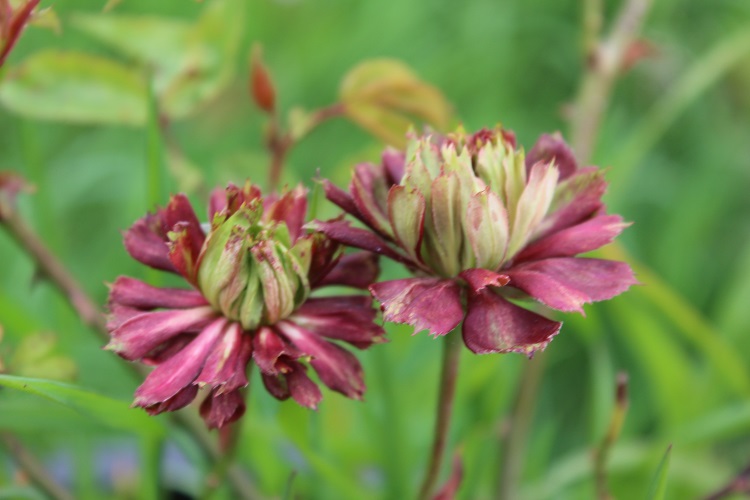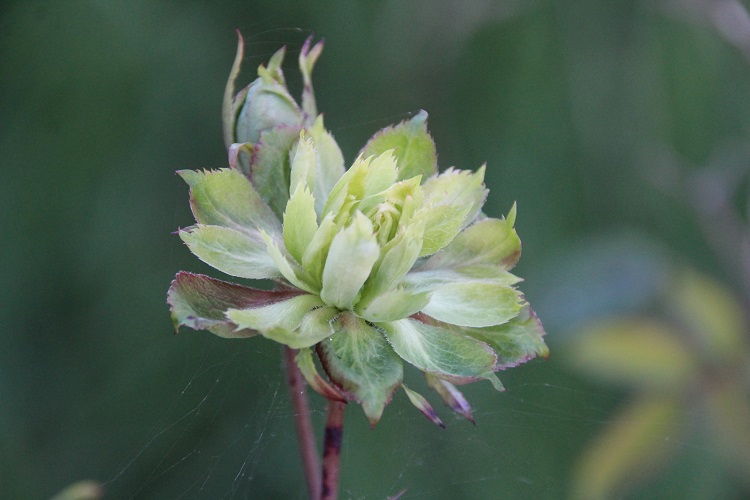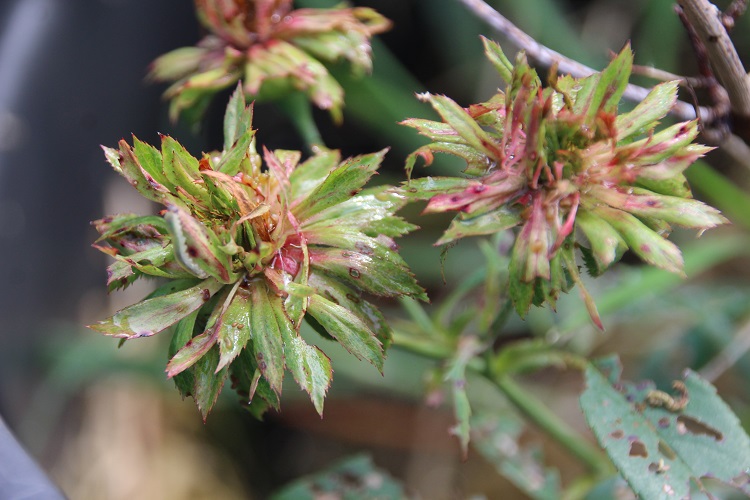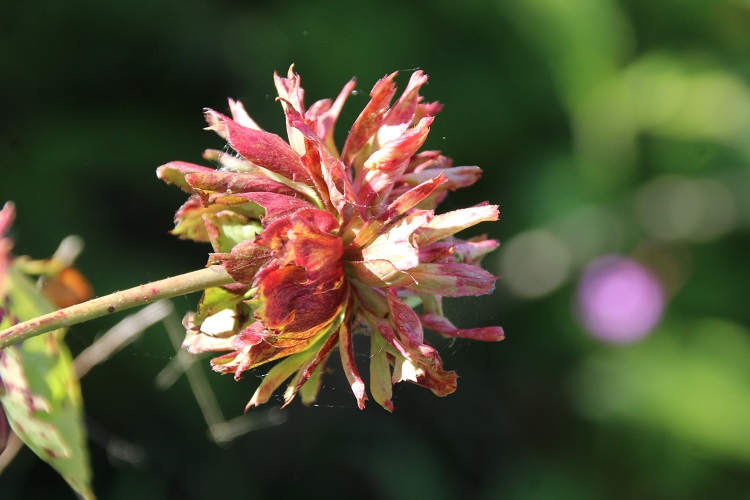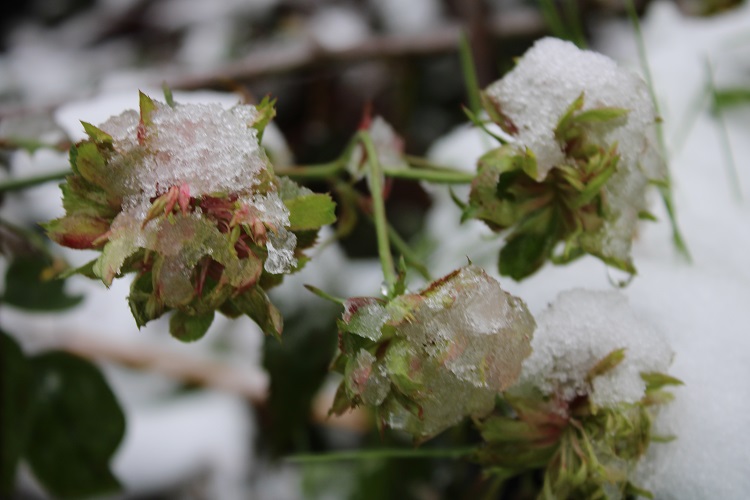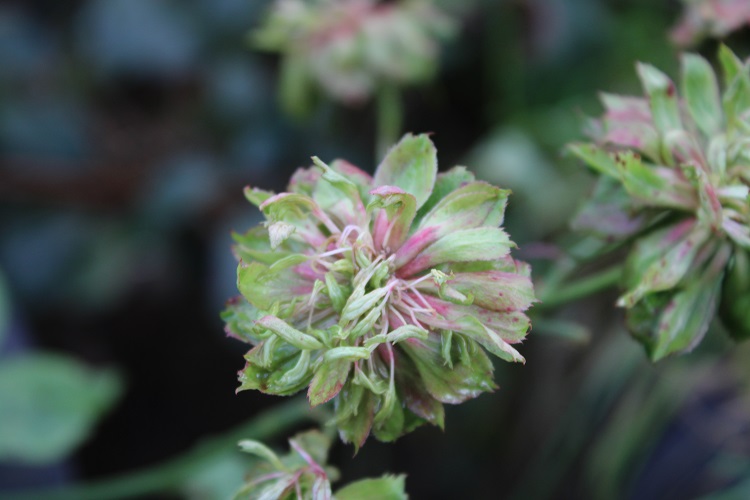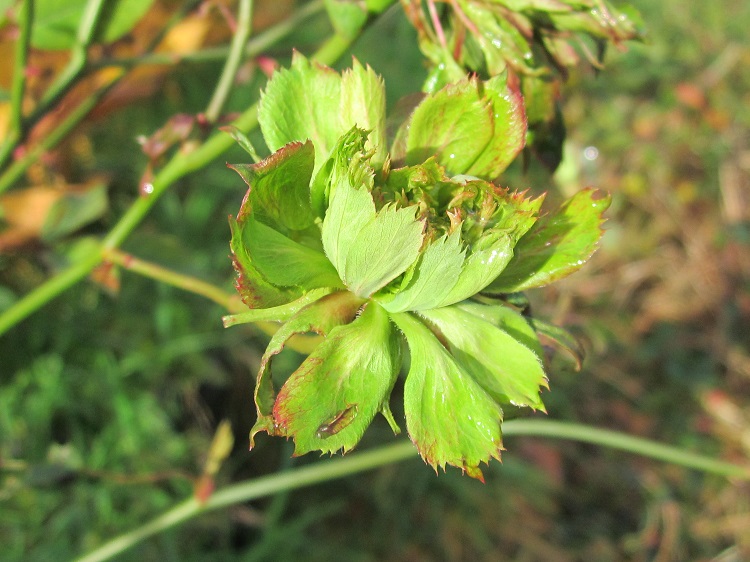 |
An old rose that amuses me like a witty but ugly comedian.
Rosa x odorata seems to flower when it pleases, without much heed of the season. 'Viridiflora' produces the best green roses during the winter,
though they develop very slowly and are prone to damage. When temperatures are higher the flowers rapidly develop rust-red tones
and become brownish. G. S. Thomas says that: "this is a free-flowering and otherwise norml plant but has all its floral parts transformed into greenish scales. The result is a beautiful oval bud, quite small, of soft blue-green, and at that stage it is acceptable. Unfortunately, on opening, it becomes loose and tawdry, splashed with brown, and cannot be called beautiful." Tawdry is the perfect word, I wish I had thought of it. On the subject of origin, he quotes a cutting he was sent from Gardeners Chronicle, though he had been unable to trace the originl. Unfortunately Mr. Thomas would have had to visit a library and search the Gardeners Chronicle by hand to find the reference. I make no claim to talent, my copy of the Gardeners Chronicle is a searchale pdf file which made locating it fairly simple. In 1875 Gardeners Chronicle published the note: "The Origin of the Green Rose. -- There appears to be some uncertainty in regard to the origin of this rose. It is a sport from Rosa indica (the China Rose of England and Daily Rose of America). It was caught in Charleston, S.C., about 1833, and came to Baltimore through Mr. R. Haliday, from whom I obtained it, and presented two plants to my old friend Thomas Rivers in 1837. The first clustering Rose was also found in Charleston and sent to Noisette, of Paris, and there founded the Noisette family of Roses. R. Buist, Rosedale Nurseries, Phildelphia." HelpMeFind online say: "Unknown Chinese origin (China, before 1800). Discovered by John Smith (United States, circa 1827). A study in 2006 showed that 'Viridiflora' is genetically identical to 'Old Blush' Smith, John. Rose Discoverer. Bladen, North Carolina, United States." |
|
| 17th November 2012 | ||
